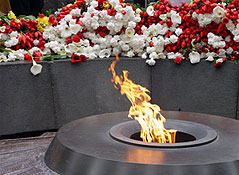 April 24 marks the 103rd anniversary of the Armenian Genocide. Armenian Genocide Remembrance Day is held annually to recognize and mourn more than 1.5 million victims of the Armenian Genocide, the most tragic element of Armenian history.
April 24 marks the 103rd anniversary of the Armenian Genocide. Armenian Genocide Remembrance Day is held annually to recognize and mourn more than 1.5 million victims of the Armenian Genocide, the most tragic element of Armenian history.
For a limited time, take advantage of a special 25% discount off all of our War and Genocide Series titles by entering the code WG18 in your shopping cart.
For more information on Armenian Genocide please visit armenian-genocide.org.
In recognizing the significance of the occasion we would like to bring to your attention a range of Armenian Genocide titles, including our War and Genocide Series, which reflects a growing interest in the study of war and genocide within the framework of social and cultural history.
There has been a growing interest in the study of war and genocide, not from a traditional military history perspective, but within the framework of social and cultural history. This series offers a forum for scholarly works that reflect these new approaches.
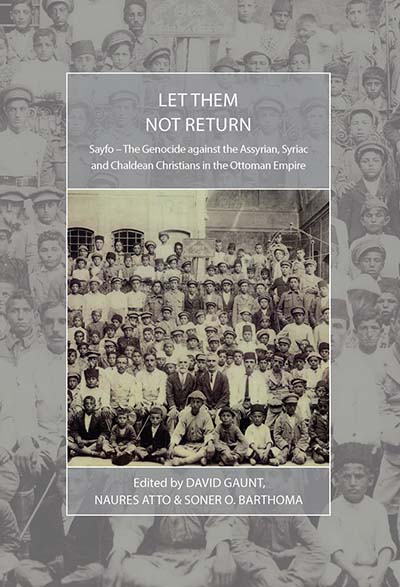 Volume 26
Volume 26
LET THEM NOT RETURN
Sayfo – The Genocide Against the Assyrian, Syriac, and Chaldean Christians in the Ottoman Empire
Edited by David Gaunt, Naures Atto, and Soner O. Barthoma
The mass killing of Ottoman Armenians is today widely recognized, both within and outside scholarly circles, as an act of genocide. What is less well known, however, is that it took place within a broader context of Ottoman violence against minority groups during and after the First World War. Among those populations decimated were the indigenous Christian Assyrians (also known as Syriacs or Chaldeans) who lived in the borderlands of present-day Turkey, Iran, and Iraq. This volume is the first scholarly edited collection focused on the Assyrian genocide, or “Sayfo” (literally, “sword” in Aramaic), presenting historical, psychological, anthropological, and political perspectives that shed much-needed light on a neglected historical atrocity.
Read Introduction: Contextualizing the Sayfo in the First World War
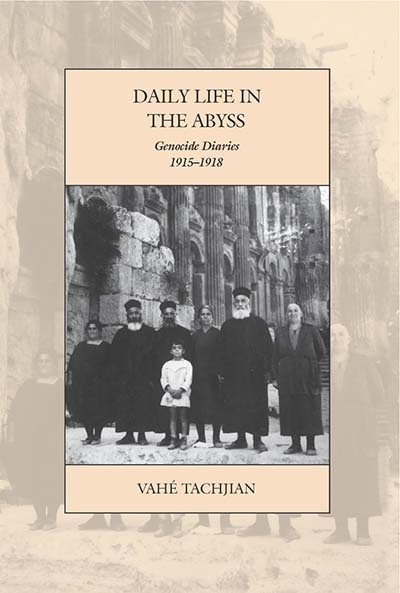 Volume 25
Volume 25
DAILY LIFE IN THE ABYSS
Genocide Diaries, 1915-1918
Vahé Tachjian
Historical research into the Armenian Genocide has grown tremendously in recent years, but much of it has focused on large-scale questions related to Ottoman policy or the scope of the killing. Consequently, surprisingly little is known about the actual experiences of the genocide’s victims. Daily Life in the Abyss illuminates this aspect through the intertwined stories of two Armenian families who endured forced relocation and deprivation in and around modern-day Syria. Through analysis of diaries and other source material, it reconstructs the rhythms of daily life within an often bleak and hostile environment, in the face of a gradually disintegrating social fabric.
Read Introduction
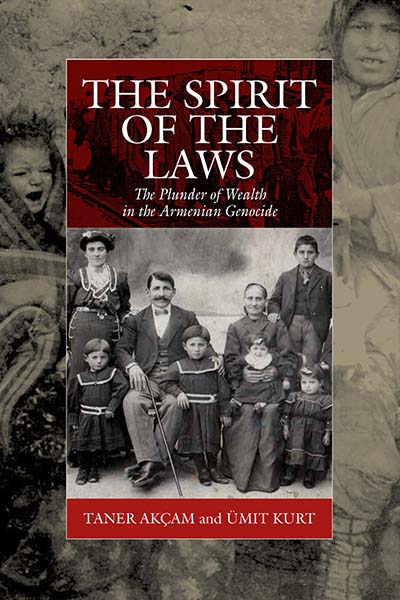 Volume 21 In Paperback
Volume 21 In Paperback
THE SPIRIT OF THE LAWS
The Plunder of Wealth in the Armenian Genocide
Taner Akçam and Umit Kurt
Translated by Aram Arkun
Pertinent to contemporary demands for reparations from Turkey is the relationship between law and property in connection with the Armenian Genocide. This book examines the confiscation of Armenian properties during the genocide and subsequent attempts to retain seized Armenian wealth. Through the close analysis of laws and treaties, it reveals that decrees issued during the genocide constitute central pillars of the Turkish system of property rights, retaining their legal validity, and although Turkey has acceded through international agreements to return Armenian properties, it continues to refuse to do so. The book demonstrates that genocides do not depend on the abolition of the legal system and elimination of rights, but that, on the contrary, the perpetrators of genocide manipulate the legal system to facilitate their plans.
Read Introduction
For a full selection of titles in the series please visit series webpage.
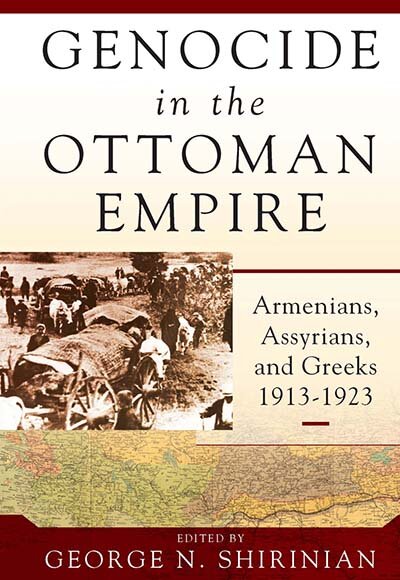 GENOCIDE IN THE OTTOMAN EMPIRE
GENOCIDE IN THE OTTOMAN EMPIRE
Armenians, Assyrians, and Greeks, 1913-1923
Edited by George N. Shirinian
The final years of the Ottoman Empire were catastrophic ones for its non-Turkish, non-Muslim minorities. From 1913 to 1923, its rulers deported, killed, or otherwise persecuted staggering numbers of citizens in an attempt to preserve “Turkey for the Turks,” setting a modern precedent for how a regime can commit genocide in pursuit of political ends while largely escaping accountability. While this brutal history is most widely known in the case of the Armenian genocide, few appreciate the extent to which the Empire’s Assyrian and Greek subjects suffered and died under similar policies. This comprehensive volume is the first to broadly examine the genocides of the Armenians, Assyrians, and Greeks in comparative fashion, analyzing the similarities and differences among them and giving crucial context to present-day calls for recognition.
Read Introduction
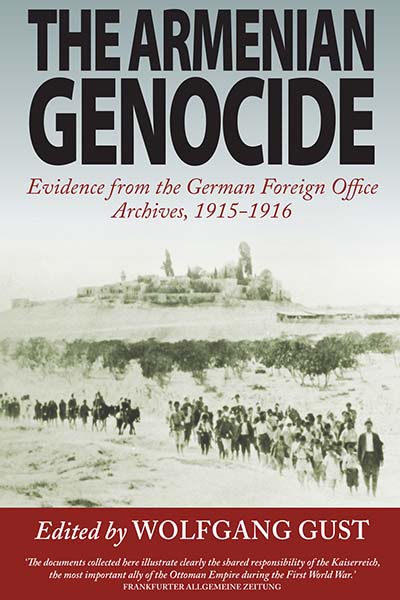 THE ARMENIAN GENOCIDE
THE ARMENIAN GENOCIDE
Evidence from the German Foreign Office Archives, 1915-1916
Compiled and Edited by Wolfgang Gust
Translated from the German
Foreword by Vahakn N. Dadrian
“This meticulously compiled work will provide historians and students with invaluable information about this lesser-known aspect of the genocide.” · Choice
In 1915, the Armenians were exiled from their land, and in the process of deportation 1.5 million of them were killed. The 1915-1916 annihilation of the Armenians was the archetype of modern genocide, in which a state adopts a specific scheme geared to the destruction of an identifiable group of its own citizens. Official German diplomatic documents are of great importance in understanding the genocide, as only Germany had the right to report day-by-day in secret code about the ongoing genocide. The motives, methods, and after-effects of the Armenian Genocide echoed strongly in subsequent cases of state-sponsored genocide. Studying the factors that went into the Armenian Genocide not only gives us an understanding of historical genocide, but also provides us with crucial information for the anticipation and possible prevention of future genocides.
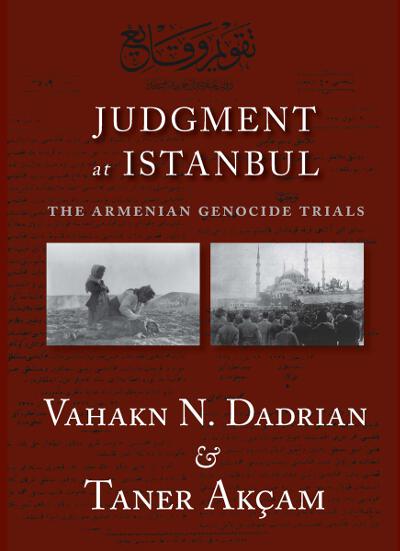 JUDGMENT AT ISTANBUL
JUDGMENT AT ISTANBUL
The Armenian Genocide Trials
Vahakn N. Dadrian and Taner Akçam
“This volume is the most comprehensive and analytical work to address the Armenian genocide from legal-criminal perspective to date. …[It] should be regarded as an important contribution to the field of Armenian genocide studies, Ottoman legal history, and the history of War Tribunals… It provides readers with a compelling argument about the historical veracity of the Armenian genocide.” · The Cyprus Review
Turkey’s bid to join the European Union has lent new urgency to the issue of the Armenian Genocide as differing interpretations of the genocide are proving to be a major reason for the delay of the its accession. This book provides vital background information and is a prime source of legal evidence and authentic Turkish eyewitness testimony of the intent and the crime of genocide against the Armenians. After a long and painstaking effort, the authors, one an Armenian, the other a Turk, generally recognized as the foremost experts on the Armenian Genocide, have prepared a new, authoritative translation and detailed analysis of the Takvim-i Vekâyi, the official Ottoman Government record of the Turkish Military Tribunals concerning the crimes committed against the Armenians during World War I. The authors have compiled the documentation of the trial proceedings for the first time in English and situated them within their historical and legal context. These documents show that Wartime Cabinet ministers, Young Turk party leaders, and a number of others inculpated in these crimes were court-martialed by the Turkish Military Tribunals in the years immediately following World War I. Most were found guilty and received sentences ranging from prison with hard labor to death. In remarkable contrast to Nuremberg, the Turkish Military Tribunals were conducted solely on the basis of existing Ottoman domestic penal codes. This substitution of a national for an international criminal court stands in history as a unique initiative of national self-condemnation. This compilation is significantly enhanced by an extensive analysis of the historical background, political nature and legal implications of the criminal prosecution of the twentieth century’s first state-sponsored crime of genocide.
WBUR’s Radio Boston interview with Taner Akçam
Online oped by Taner Akçam on Boston Globe
Online oped by Taner Akçam on Al Jazeera
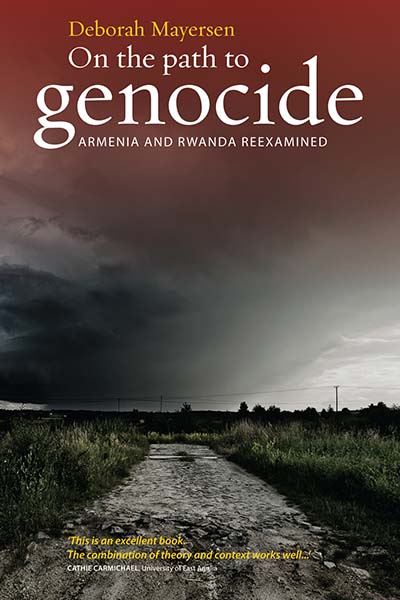 in paperback
in paperback
ON THE PATH TO GENOCIDE
Armenia and Rwanda Reexamined
Deborah Mayersen
“Mayersen has written a fine text… Ultimately, Mayersen concludes that genocides are ‘fundamentally preventable’ and offers insights into prevention. The text is well organized, thoroughly researched, and brings to bear important new perspectives on genocide studies. – Highly recommended.” · Choice
Why did the Armenian genocide erupt in Turkey in 1915, only seven years after the Armenian minority achieved civil equality for the first time in the history of the Ottoman Empire? How can we explain the Rwandan genocide occurring in 1994, after decades of relative peace and even cooperation between the Hutu majority and the Tutsi minority? Addressing the question of how the risk of genocide develops over time, On the Path to Genocide contributes to a better understand why genocide occurs when it does. It provides a comprehensive and comparative historical analysis of the factors that led to the 1915 Armenian genocide and the 1994 genocide in Rwanda, using fresh sources and perspectives that yield new insights into the history of the Armenian and Rwandan peoples. Finally, it also presents new research into constraints that inhibit genocide, and how they can be utilized to attempt the prevention of genocide in the future.
Read Introduction: ‘The Symptoms of an Explosive Situation’: The Temporal Model of Genocide
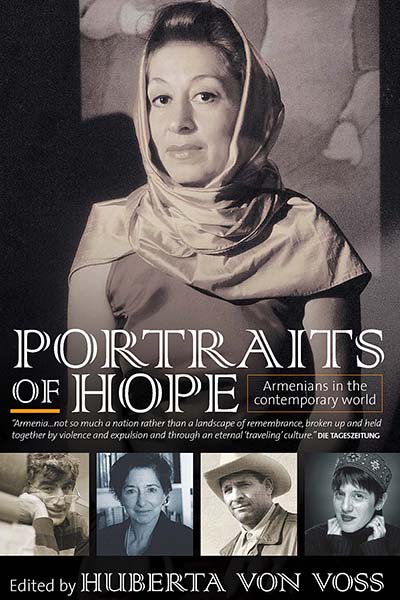 PORTRAITS OF HOPE
PORTRAITS OF HOPE
Armenians in the Contemporary World
Edited by Huberta von Voss
With a Preface by Yehuda Bauer, Jerusalem
“…certainly a well-put together and edited compendium of Armenian socio-political and cultural essays …And it has a great deal to offer both the educated and altruistic reader alike about the passionate and fatalistic woven threads that compose Armenian life and identity today.” · Armenian Weekly
Elie Wiesel called the genocide of the Armenians during the First World War ‘the Holocaust before the Holocaust’. Around one and a half million Armenians – men, women and children – were slaughtered at the time of the First World War. This book outlines some of the historical facts and consequences of the massacres but sees it as its main objective to present the Armenians to the foreign reader, their history but also their lives and achievements in the present that finds most Armenians dispersed throughout the world. 3000 years after their appearance in history, 1700 years after adopting Christianity and almost 90 years after the greatest catastrophe in their history, these 50 ‘biographical sketches of intellectuals, artists, journalists, and others…produce a complicated kaleidoscope of a divided but lively people that is trying once again, to rediscover its ethnic coherence. Armenian civilization does not consist solely of stories about a far-off past, but also of traditions and a national conscience suggestive of a future that will transcend the present.’ [from the Preface]
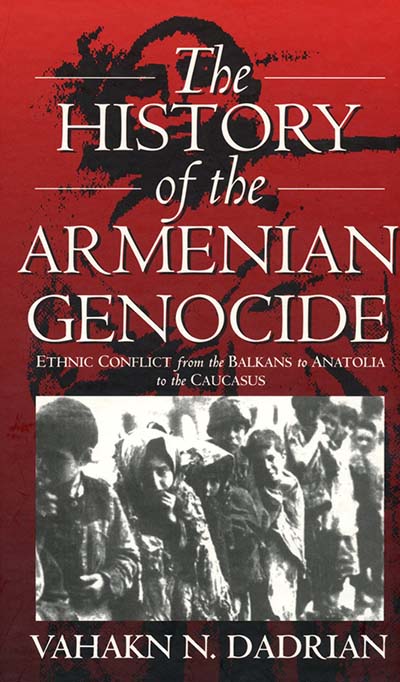 THE HISTORY OF THE ARMENIAN GENOCIDE
THE HISTORY OF THE ARMENIAN GENOCIDE
Ethnic Conflict from the Balkans to Anatolia to the Caucasus
Vahakn N. Dadrian
“… marshals considerable evidence to show how the development of the Turkish-Armenian conflict escalated to the point of genocide … Dadrian makes [an] important contribution to our understanding of the dynamics of the Ottoman decision to destroy its Armenian subjects.” · MESA Bulletin
The Armenian Genocide, though not given such prominent treatment as the Jewish Holocaust which it precedes, still haunts the Western world and has assumed a new significance in the light of “ethnic cleansing” in Bosnia and, more recently, Darfur. This study by the most distinguished scholar of the Armenian tragedy offers an authoritative analysis by presenting it as a case study of genocide and by seeing it as an historical process in which a domestic conflict escalated and was finally consumed by global war.
Of Related Interest:
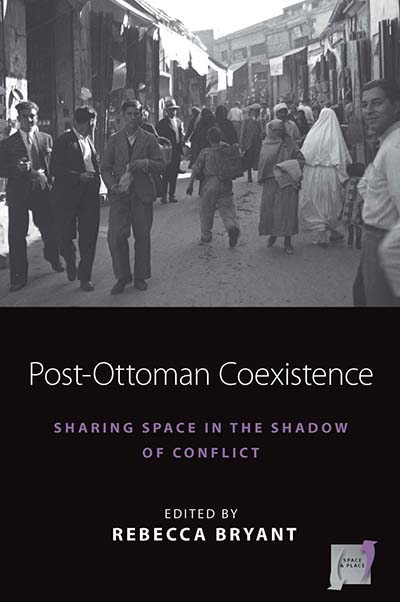 POST-OTTOMAN COEXISTENCE
POST-OTTOMAN COEXISTENCE
Sharing Space in the Shadow of Conflict
Edited by Rebecca Bryant
Post-Ottoman Coexistence: Sharing Space in the Shadow of Conflict edited by Rebecca Bryant is available open access under a Creative Commons Attribution-NonCommercial-NoDerivatives 4.0 International License (CC BY-NC-ND 4.0).
This edition is supported by Knowledge Unlatched. Full text.
In Southeast Europe, the Balkans, and Middle East, scholars often refer to the “peaceful coexistence” of various religious and ethnic groups under the Ottoman Empire before ethnonationalist conflicts dissolved that shared space and created legacies of division. Post-Ottoman Coexistence interrogates ways of living together and asks what practices enabled centuries of cooperation and sharing, as well as how and when such sharing was disrupted. Contributors discuss both historical and contemporary practices of coexistence within the context of ethno-national conflict and its aftermath.
Post-Ottoman Coexistence: Sharing Space in the Shadow of Conflict edited by Rebecca Bryant is available open access under a Creative Commons Attribution-NonCommercial-NoDerivatives 4.0 International License (CC BY-NC-ND 4.0).
This edition is supported by Knowledge Unlatched. Full text.
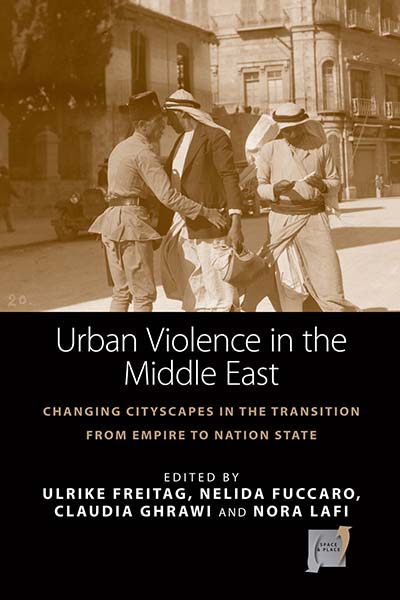 URBAN VIOLENCE IN THE MIDDLE EAST
URBAN VIOLENCE IN THE MIDDLE EAST
Changing Cityscapes in the Transition from Empire to Nation State
Edited by Ulrike Freitag, Nelida Fuccaro, Claudia Ghrawi, and Nora Lafi
“…the spatial approach of the studies in this volume provides a framework for understanding recent events. For students and researchers examining street politics and urban conflict, in the Middle East or beyond, Urban Violence in the Middle East shows how macro level spatial context can be used to develop deeper and more nuanced understanding of micro level violence and political contestation.” · Middle East Media and Book Reviews Online
Covering a period from the late eighteenth century to today, this volume explores the phenomenon of urban violence in order to unveil general developments and historical specificities in a variety of Middle Eastern contexts. By situating incidents in particular processes and conflicts, the case studies seek to counter notions of a violent Middle East in order to foster a new understanding of violence beyond that of a meaningless and destructive social and political act. Contributions explore processes sparked by the transition from empires — Ottoman and Qajar, but also European — to the formation of nation states, and the resulting changes in cityscapes throughout the region.
JOURNAL ARTICLES
 Staging Sassoun
Staging Sassoun
Memory and Music Video in Post-Soviet Armenia by Rik Adriaans
Social Analysis
The International Journal of Anthropology
 “The road to Golgotha”
“The road to Golgotha”
Representing loss in postsocialist Armenia by Tsypylma Darieva
Focaal
Journal of Global and Historical Anthropology
